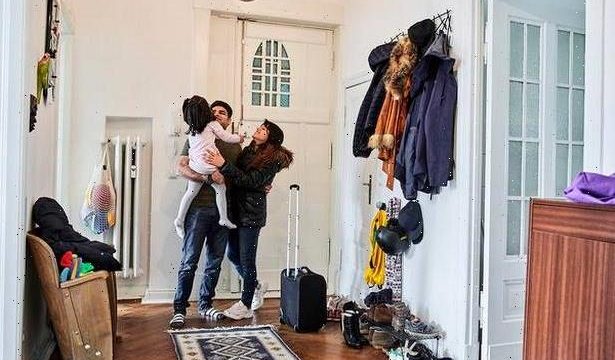Why every Indian home could do with this feature during the rainy season
Historically, mudrooms were born in rural settings where roads were unpaved and boots were perennially muddy. The result? Wet footprints, mud on the floor, and very often boot tracks through the home.
Mudrooms were typically seen in farmhouses in the 18th century and more often than not were a small closet-like space off the kitchen or at the entryway. By the 1970s, many homes in the West had such areas which were usually located between the garage and the kitchen.
Indian homes and mudrooms don’t really go back a long way but there’s no reason that they shouldn’t. Especially not in the monsoon!
Try out these easy tips to transform a small entryway or verandah into a mudroom this season.
Design it to be functional
A mudroom has certain specific functions; it’s the small entryway where footwear and outer clothes can be removed and placed before entering the home. Place a coat stand for wet raincoats, a mesh umbrella stand for dripping umbrellas and a stone-lined tray for slushy shoes.
Style it right
Function should never detract from the form; so what if it’s just the humble mudroom? Simple or elegant, a few décor elements will transform this space into a welcoming and warm one. Add a mirror for last-minute touch-ups.
The mudroom staple
No mudroom can do without a bench. This piece of furniture works in myriad ways — you can perch yourself to wear or take off your shoes, put down your shopping bag or sit to take a call. Make it a space-intensive area by creating room to put shoes underneath.
Keep the kids in mind
Children are the ones who love to wade in muddy puddles and it’s important that you kit out the mudroom to suit them. Avoid closets and cupboards; low-hanging hooks for rain coats and a boot stand are ideal. The flooring should be anti-skid, so look for options to avoid accidents.
Cut the clutter
Where kids are, clutter seems to follow. Keep your mudroom organised and clutter-free, by making the space as functional and efficient as you can. Double up the hook rows; you can use one for hanging rain gear and the other for bags. Bring in a set of bins or baskets if space permits. It allows everyone to have a designated space for their things.
Go vertical
Mudrooms are not really rooms; they’re usually little nooks or niches. Make the most of the small square footage by exploring the vertical dimension with shelves, closets and cubbies. You’ll have enough storage and a neat mudroom. Could you ask for anything more?
Get it ready-to-go
Make your mudroom the best go-to spot from your home. A couple of charging points to get your phone ready to go, a key organiser and a catchall for your sunglasses will ensure that you’re out of your home without forgetting a thing.
The mudroom may be a foreign concept, but it’s one that can be adopted by almost any family. The best part is that it can serve different purposes for different families.
Use it to stash your purses, bags, raincoats, and sports gear. A series of racks, hooks, and hangers can help optimise storage options, keep clutter out of the other rooms, and ensure that all your things are organised better.
Also, the addition of accessories such as a bulletin board or a chalkboard can help draw up schedules for all family members, ensuring that everyone’s on the same page.
Source: Read Full Article

